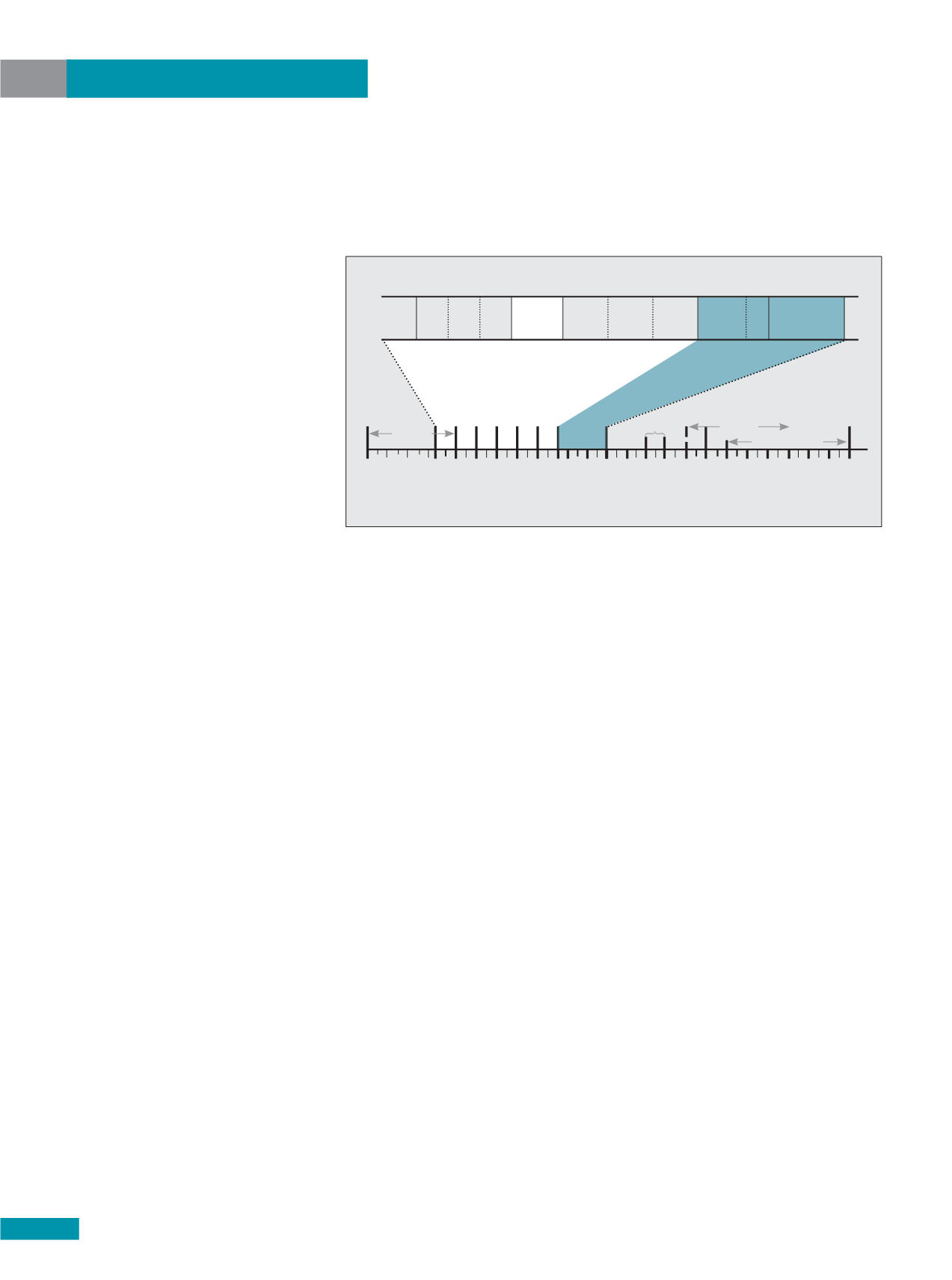

7 8
C AB L I NG CONNE CT I ON
AUTUMN 2 01 5
TECHNICALLY SPEAKING
Media are the message
W
e live in exciting times in which
the dream of communicating
with anyone and anything at
any time in any place is materialising before
our eyes.
Those of us who have been around for a
while have lost count of the generations of
communications equipment and devices
used for work and leisure.
It feels as though we got onto a roller
coaster that became faster and more
exciting as we immersed ourselves in the
communications ‘ether’.
LIMITED BANDWIDTH RESOURCE
The amount of data traffic in various media
keeps increasing at an exponential rate.
Until a few years ago, one gigabyte was
considered excessive. Nowwe talk about
application data traffic in terms of terabytes
(1012 bytes), petabytes (1015 bytes) and
exabytes (1018 bytes).
These huge amounts of data being carried
over internet protocol networks are stressing
transport media to their limits.
The bandwidth available is finite (see Table
1). It is determined by the frequency spectrum
ranging from very low frequency (VLF) radio
waves to gamma rays. Communicationmedia
generally use the band fromVLF to infrared.
Different media use different parts of the
spectrum. Complex modulation schemes
are developed to capture every last bit of
capacity in the finite spectrum.
INSATIABLE DEMAND
Every conceivable device is being
connected to every possible entity.
The electronic communication world is
multi-faceted and includes live streaming
of video and audio for entertainment, cloud
computing, building automation, social
audio and video networking, security at the
community and personal levels, and energy
consumption monitoring.
These applications are supported
over bounded (wired) and unbounded
media, depending on location and cost
effectiveness. All this requires bandwidth.
BANDWIDTH EFFICIENCY AND
MODULATION
Communication bandwidth depends
on the frequency spectrum used by
the transmission medium and the
electromagnetic environment affecting
the medium.
The channel frequency spectrum (Hz) and
the signal-to-noise ratio of the transmission
medium determine the maximum possible
capacity (data rate: bits per second) of the
band-limited communication system, in
accordance with the well-known Shannon-
Hartley Law.
The most common definition of
bandwidth is the half-power (3dB)
bandwidth. The efficiency of the allocated
bandwidth is expressed in terms of bits
per second/Hertz (bps/Hz). Obviously, the
greater the bps rate over a frequency of
1Hz, the smaller the frequency spectrum
required to transmit the maximum bps in
the shortest time possible.
A useful analogy would be the maximum
energy of a fluid flowing through a pipe at
the highest volume flow rate possible. This
analogy supports the claim that electronic
communication is the fourth utility.
Much effort is expended in devising
complex modulation schemes to improve
the transmission efficiency of the signal,
thereby using the smallest possible
bandwidth.
Such schemes include pulse amplitude
modulation at various levels, QAM 16/64
(quadrature amplitude modulation: efficiency
4/6bps/Hz), QPSK (quadrature phase
shift keying: efficiency 2bps/Hz), OFDM
(orthogonal frequency division multiplexing:
efficiency >10bps/Hz) and many others.
Different modulation schemes are used
to obtain the best bandwidth efficiency for
specific systems.
The communications evolution
has spawned multiple species
of devices, transmission media
and technologies.
Patrick
Attard
clears the air.
Table 1: RF Spectrum.
1Hz
1kHz
1MHz
1GHz
1THz
1PHz
1EHz
(Kilo)
(Mega)
(Giga)
(Tera)
(Peta)
(Exa)
10
0
10
2
10
3
10
4
10
6
10
8
10
9
10
10
10
12
10
14
10
16
10
18
10
20
10
22
10
24
WAVELENGTH
1000m
100m
10m
1
m
0.3m 0.1m
0.01m
FREQUENCY
3000kHz 550kHz 1650kHz
3Mkz
30MHz
88MHz
105MHz
300MHz
1GHz 3GHz
30Ghz
VHF
INFRARED
LIGHT
HF
MF
LF
VLF
VLF,
LF
MF
AM
BAND
LOW
BAND
FM
BAND
HIGH
BAND
HF
RADIO FREQUENCY SPECTRUM
VHF
UHF
SHF
AUDIO
XRAYS
GAMMA RAYS
MICROWAVES
ULTRAVIOLET
MICROWAVES
FREQUENCY – Hz
VISIBLE
















